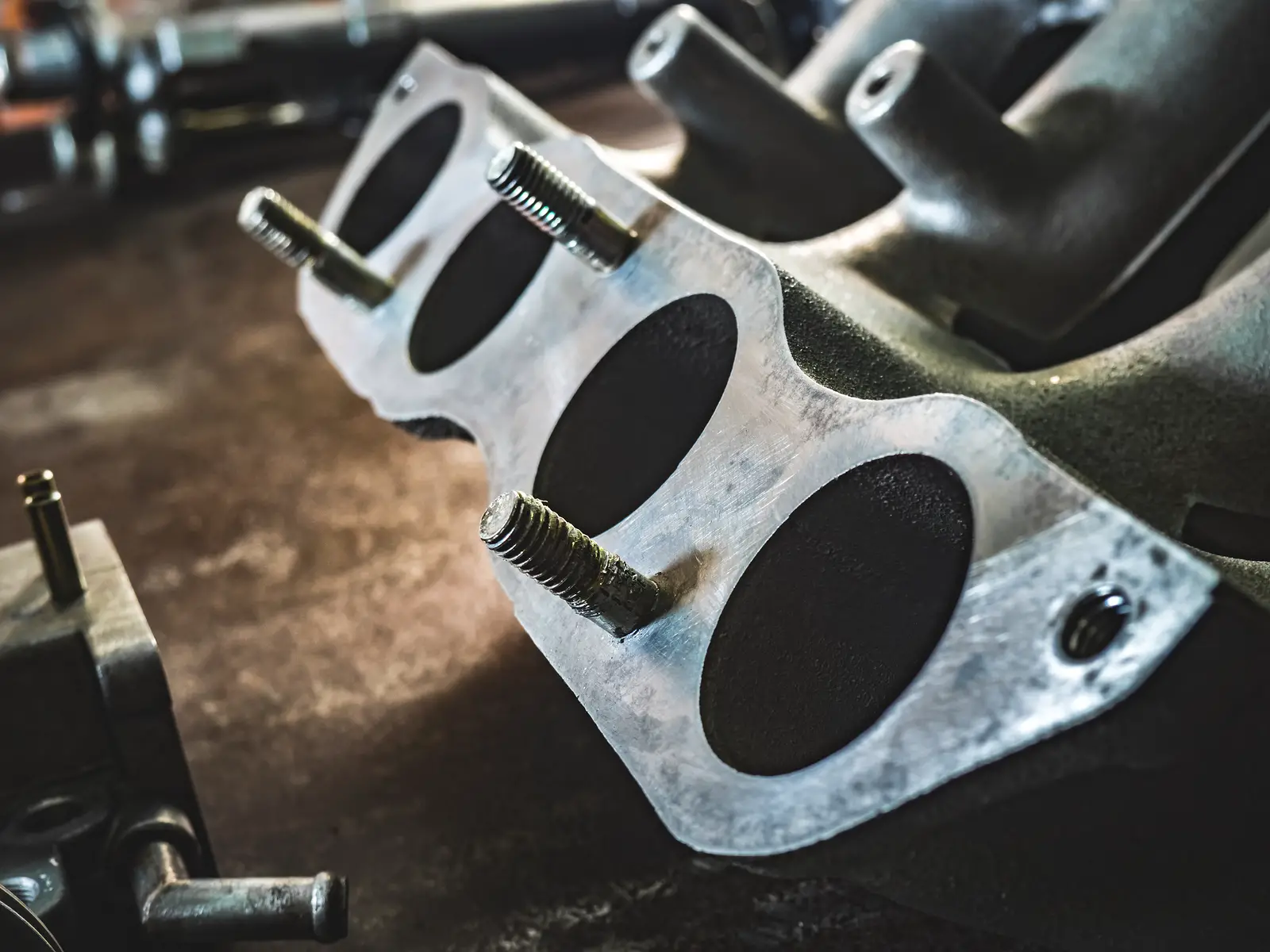Your car’s engine is the life of your vehicle; without it, your car will not function. Car owners should take extra care and make sure that the engines are clean and kept in the best condition.
As time goes by, carbon deposits, sludge, and grime may get in your engines, which affects fuel efficiency and your vehicle’s overall performance. One of the overlooked parts is the intake manifold.
You might be wondering, what is an intake manifold? When I was interviewing people and asking them what they knew about the intake manifold, they had this puzzled look on their faces. That was my first reaction as I was speaking to a mechanic.
More...
Well, an intake manifold, also known as an inlet manifold, is part of the engine that acts as a passageway for air and fuel. Its main function is to evenly distribute air and fuel mixture to each intake port within the cylinder so that the engine will run.
Think of a steam engine that runs on coal. Coal is burned in the steam engine to give the train energy and make it run. The process for vehicles is almost similar. The intake manifold serves as the “combustion area” where fuel and air are “burned” which makes your car move.
How Does the Intake Manifold Work?
One of the biggest problems that vehicle owners may encounter is a dirty intake manifold. When this happens, carbon builds up and lessens the motor’s air intake. The air and fuel ratio should be perfectly balanced so that it efficiently burns the fuel as you step on the gas pedal.

Intake Manifold
Therefore, if the air and fuel are not properly combusted, you burn more fuel as evident on the black exhaust fumes. This also affects fuel efficiency and causes air pollution.
When the Engine Control Unit (ECU) senses that there is more fuel intake than air intake, it adjusts by taking in more air. The sensors will give out an inaccurate reading, which affects fuel efficiency and loss of horsepower.
When the intake manifold is not working correctly, you burn more fuel than is needed because there is less air intake. On the other hand, you waste more fuel because there is less air and doesn’t properly burn the fuel.

Car owners should make it a habit to have their intake manifold inspected when they notice that the exhaust smoke is too dark and the car emits dark exhaust fumes. You will also notice that you tend to consume more fuel when the intake manifold is not functioning properly due to carbon deposits and sludge build up.
If you are comfortable doing so, you may clean the intake manifold by yourself. So, here are some simple steps on how to clean intake manifold without removing it from your vehicle.
How to Clean the Intake Manifold
What You Need
With the introduction of advanced cleaning products in the market, cleaning the intake manifold is easier, and you don’t have to dismantle the engine to clean it. However, make sure that you are confident and skilled to perform the steps. All you need are the following:
Power Foam Intake Cleaner
This power foam is made especially for cleaning the throttle and intake manifold and remove carbon deposits, grime, gum, and varnish. Most power foam sprays are safe for fuel injectors, catalytic converters, and emissions-control devices. We recommend you try Sea Foam SS14 Cleaner and Lube, or Amsoil Power Foam
The Other Things You Need

- Screwdrivers and wrenches – for unscrewing or removing the tubes/hoses
- Household gloves – to protect your hands from any harmful chemicals and the heat of the engine
- Surgical face mask – to prevent yourself from inhaling toxic fumes
- Clean microfiber cloths or any cotton cloths – these will be used to wipe off excess liquid from the engine.
Step-by-Step
Before starting the process, park your car in a shady and well-ventilated area, but not in a secluded place. Put on your work gloves and your face mask for protection. When cleaning the intake manifold, you may also need to clean out the throttle since this is also attached to it.
- Step 1: Make sure that your vehicle is parked in a well-ventilated area so you or other people won’t get suffocated by exhaust fumes.
- Step 2: Turn off the engine then detach the air intake tube from the throttle.
- Step 3: Clean the throttle by spraying the power foam onto the plate.
- Step 4: Get a clean cloth and wipe off the throttle plate as well as any areas that have excess liquid on them.
- Step 5: Attach the air intake duct back into the throttle.
- Step 6: Detach the vacuum hose from the intake manifold.
- Step 7: Start the engine and let it idle.
- Step 8: While the car is at a fast idle, spray half a can of power foam into the vacuum line.
- Step 9: Turn off the engine then let the spray foam sit in for about five minutes.
- Step 10: Attach the vacuum hose back to the intake manifold.
In most cases, you may also need to clean the pistons after cleaning the throttle and intake manifold. If you choose to do so, be sure to cover and remove the spark plugs so they don’t get wet.
Note
The above steps are meant for professionals or those who have the skills and knowledge about cars. Do not attempt to accomplish them if you are an amateur as it may cause you harm and damage your car if not done correctly.
Quick Video on How to Perform the Steps.
Conclusion

We’d love to hear your thoughts about this article. If you have some additional tips and if you have tried this, please share with us your experiences. We always love to hear creative ideas from our readers. Don’t hesitate to share your feedback on the comments section.
Please share this article with your friends and other car enthusiasts. If you have suggestions for articles or questions about cars, please send us a message, and we’d love to find the answers for you.


“The intake manifold serves as the “combustion area” where fuel and air are “burned” which makes your car move.”
Thanks for posting this, but this statement is incorrect.
In a traditional EFI engine, fuel is injected into the intake manifold and gets sucked into the cylinder, via the intake valves, before being compressed and burned. In the cylinder. (Technically, the combustion chamber is the area between the top of the cylinder at TDC and the head.)
In a GDI / direct injection motor, fuel is injected directly into the cylinder, bypassing the intake manifold completely. (This also leads to carbon buildup on the intake valves, which is a horrendous pain to clean.) No fuel enters the intake manifold.
In any case – whether you’re considering port fuel injection, direct injection, diesel or even a rotary – combustion *never* takes place in the intake manifold. The intake manifold is just a very complex and expensive funnel designed to get air (and sometimes fuel) into the combustion chamber. Which is not the intake manifold. At all. Like, ever.
Cheers and happy New Year!
Thank you for the advice!
What a horribly inaccurate response to a perfect video. Even idiots can apparently respond to articles written by experts.